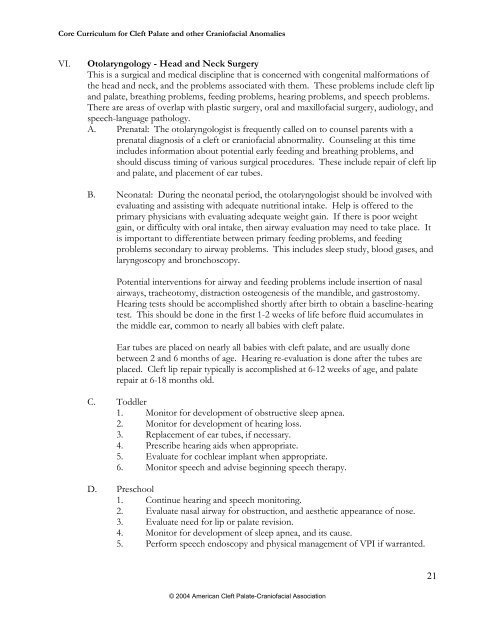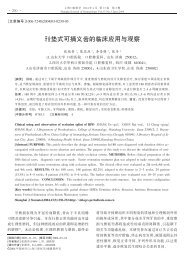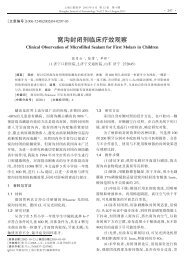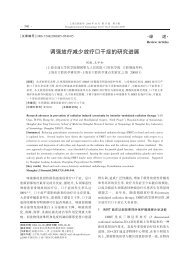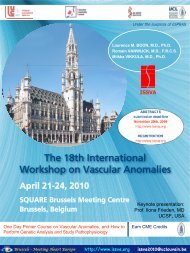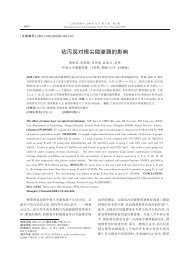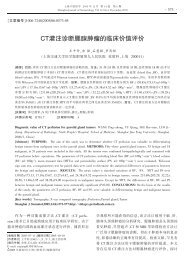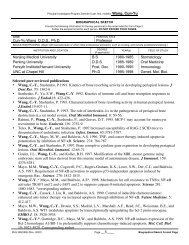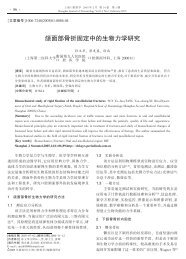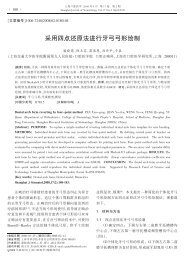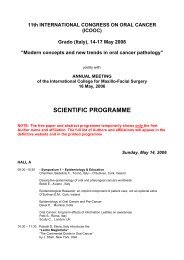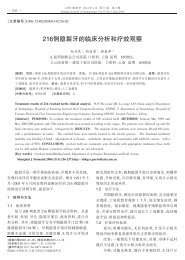core curriculum cleft lip/palate craniofacial anomalies
core curriculum cleft lip/palate craniofacial anomalies
core curriculum cleft lip/palate craniofacial anomalies
You also want an ePaper? Increase the reach of your titles
YUMPU automatically turns print PDFs into web optimized ePapers that Google loves.
Core Curriculum for Cleft Palate and other Craniofacial Anomalies<br />
VI.<br />
Otolaryngology - Head and Neck Surgery<br />
This is a surgical and medical discipline that is concerned with congenital malformations of<br />
the head and neck, and the problems associated with them. These problems include <strong>cleft</strong> <strong>lip</strong><br />
and <strong>palate</strong>, breathing problems, feeding problems, hearing problems, and speech problems.<br />
There are areas of overlap with plastic surgery, oral and maxillofacial surgery, audiology, and<br />
speech-language pathology.<br />
A. Prenatal: The otolaryngologist is frequently called on to counsel parents with a<br />
prenatal diagnosis of a <strong>cleft</strong> or <strong>craniofacial</strong> abnormality. Counseling at this time<br />
includes information about potential early feeding and breathing problems, and<br />
should discuss timing of various surgical procedures. These include repair of <strong>cleft</strong> <strong>lip</strong><br />
and <strong>palate</strong>, and placement of ear tubes.<br />
B. Neonatal: During the neonatal period, the otolaryngologist should be involved with<br />
evaluating and assisting with adequate nutritional intake. Help is offered to the<br />
primary physicians with evaluating adequate weight gain. If there is poor weight<br />
gain, or difficulty with oral intake, then airway evaluation may need to take place. It<br />
is important to differentiate between primary feeding problems, and feeding<br />
problems secondary to airway problems. This includes sleep study, blood gases, and<br />
laryngoscopy and bronchoscopy.<br />
Potential interventions for airway and feeding problems include insertion of nasal<br />
airways, tracheotomy, distraction osteogenesis of the mandible, and gastrostomy.<br />
Hearing tests should be accomplished shortly after birth to obtain a baseline-hearing<br />
test. This should be done in the first 1-2 weeks of life before fluid accumulates in<br />
the middle ear, common to nearly all babies with <strong>cleft</strong> <strong>palate</strong>.<br />
Ear tubes are placed on nearly all babies with <strong>cleft</strong> <strong>palate</strong>, and are usually done<br />
between 2 and 6 months of age. Hearing re-evaluation is done after the tubes are<br />
placed. Cleft <strong>lip</strong> repair typically is accomplished at 6-12 weeks of age, and <strong>palate</strong><br />
repair at 6-18 months old.<br />
C. Toddler<br />
1. Monitor for development of obstructive sleep apnea.<br />
2. Monitor for development of hearing loss.<br />
3. Replacement of ear tubes, if necessary.<br />
4. Prescribe hearing aids when appropriate.<br />
5. Evaluate for cochlear implant when appropriate.<br />
6. Monitor speech and advise beginning speech therapy.<br />
D. Preschool<br />
1. Continue hearing and speech monitoring.<br />
2. Evaluate nasal airway for obstruction, and aesthetic appearance of nose.<br />
3. Evaluate need for <strong>lip</strong> or <strong>palate</strong> revision.<br />
4. Monitor for development of sleep apnea, and its cause.<br />
5. Perform speech endoscopy and physical management of VPI if warranted.<br />
21<br />
© 2004 American Cleft Palate-Craniofacial Association


